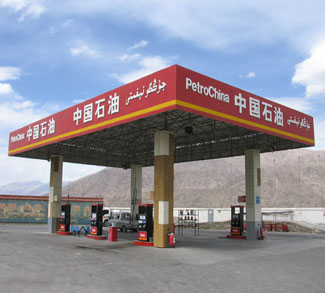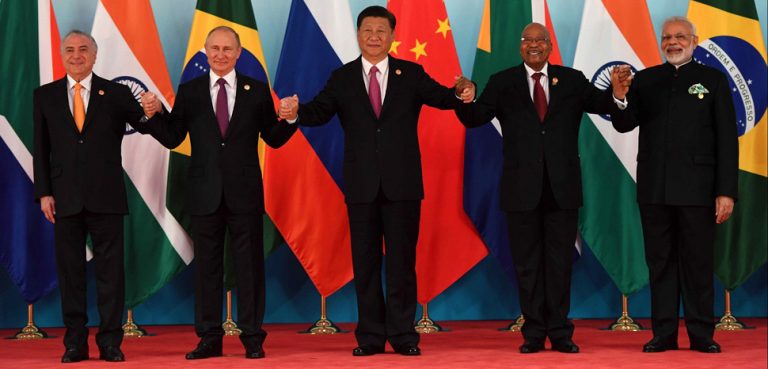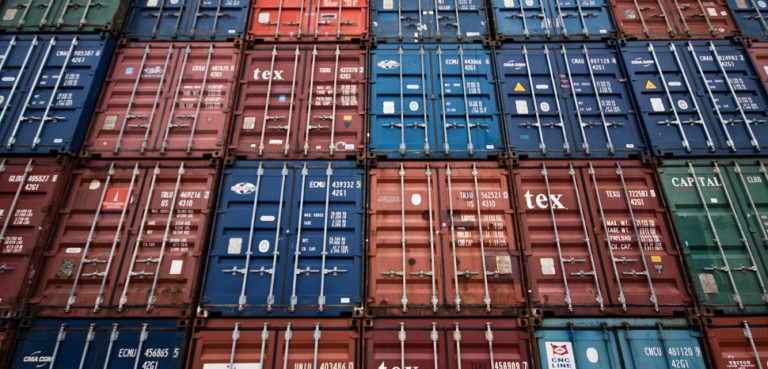When the bottom fell out of China-Australia relations last year, there was one conspicuous absence in the parade of punitive trade measures rolled out by Beijing: iron ore. Quite the contrary, bilateral trade in iron has boomed as other commodities withered. Iron exports accounted for well over half of Australia’s exports to China in 2020, and trade volumes have been supercharged by China’s post-COVID economic normalization in early 2021.
Overall, China imported 1.17 billion tons worth of iron ore in 2020, around 60% of which originated from Australian mines.

The trade is particularly lucrative for Australia of late due to sky-high prices. Iron ore is currently trading at 10-year highs, with prices up over 130% since July of last year. It’s a sellers’ market, so much so that one analyst has characterized the current climate as an unprecedented “transfer of wealth” from China to Australia. By some estimates, sustained prices of over $200 a ton will result in additional government revenues of $34-37 billion. Iron prices sit at approximately $213 at time of writing.
Iron ore is a commodity of no small amount of geopolitical import. As a key input in steelmaking, iron prices serve as a barometer for industrial production in a general sense and, particularly in the case of China, state-led infrastructure spending as well. Data from early 2021 bears this out, as white-hot steel output and fixed-asset investment within China have coincided with buoyant iron prices. US plans for large, state-led infrastructure spending have also contributed to the trend.So critical is iron ore to the Chinese economy that it has been firewalled from the rot afflicting other areas of the China-Australia trade relationship. The commodity has been spared the Chinese tariffs that have been slapped on other Australian exports such as wine, barley, and beef. This is a case of short-term economic expediency trumping foreign policy considerations. But make no mistake: If Beijing could crack down on Australian iron ore exports, it would. But alternative source of supply – both domestic and foreign – are scant, and it would be impossible to completely replace the 732 mt of iron ore (2020) that Australia provides without severe economic disruptions
At least for the time being.
Ever-sensitive of any foreign leverage over its economic destiny (and thus internal political stability), the Beijing authorities are moving to diversify iron supply and lessen China’s dependence on Australian iron exports. In its most recent monthly briefing, the National Development and Reform Commission (NDRC) called on domestic mining outfits to make efforts to increase iron production within China. Specifically, the commission recommended renewed exploration initiatives, streamlining of domestic mining projects, and the promotion of steel recycling efforts to reduce raw iron requirements.
The NDRC also made recommendations meant to broaden foreign sources of supply, namely by optimizing supply chains and promoting foreign exploration and acquisition by domestic operators. Here the focus inevitably falls on the Simandou mining complex in Guinea, one of the world’s largest untapped iron reserves, which has a long and at times notorious history of corruption and false starts. In 2019, a consortium led by China’s Shandong Weiqiao and the Yantai Port Group secured the rights to the northern section of Simandou with a $14 billion bid. Rio Tinto retains the rights to two of the southern blocks.
Plans are now moving forward on new port and rail facilities in order to export ore from Simandou, and the area is expected to start producing around 60 mt of high-grade iron when it comes online in 2026.
But herein lies the challenge for Beijing. Even under the best-case scenario, where a multitude of infrastructure and governance hurdles are ultimately overcome and Simandou starts churning out iron ore on-schedule, the needle of global production barely moves. There are two takeaways here: 1) any serious push toward diversification will take many years to be realized; and 2) it will have to involve a full-court press of cultivating new domestic and foreign supply in order to be effective. In other words, no matter what, China will continue to be reliant on Australian iron ore exports over the short- to medium-term.
During this (perhaps temporary) reprieve from Chinese sanctions, Australian policymakers will have some decisions to make. Will they seek to use this leverage to push for sanction relief elsewhere in the bilateral trade relationship? Will they earmark some of their expected $30+ billion windfall of royalties and tax revenues and put it toward transitioning efforts and future relief for Australian producers, much like oil producing states use stabilization funds to blunt the economic impact of prolonged low energy prices? Or will Canberra opt for the time-tested approach of doing nothing at all, leaving the country vulnerable to another bout of economic coercion if and when Chinese industry finally weans itself off iron exports from down under?
Whatever the ultimate decision, time is on Canberra’s side – for now. It will take years for China to wean itself off of Australian ore, if ever.




